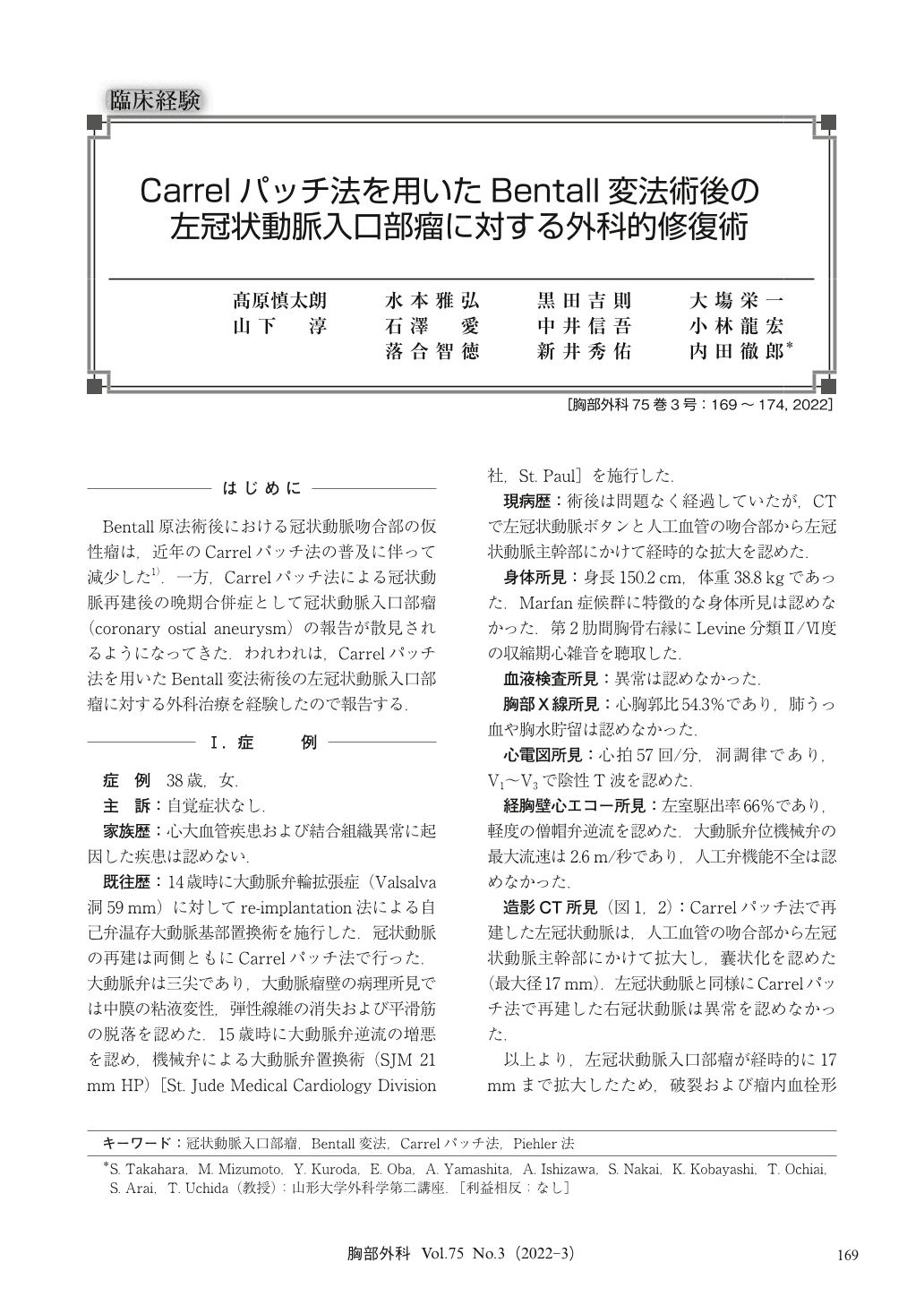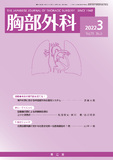Japanese
English
- 有料閲覧
- Abstract 文献概要
- 1ページ目 Look Inside
- 参考文献 Reference
- サイト内被引用 Cited by
Bentall原法術後における冠状動脈吻合部の仮性瘤は,近年のCarrelパッチ法の普及に伴って減少した1).一方,Carrelパッチ法による冠状動脈再建後の晩期合併症として冠状動脈入口部瘤(coronary ostial aneurysm)の報告が散見されるようになってきた.われわれは,Carrelパッチ法を用いたBentall変法術後の左冠状動脈入口部瘤に対する外科治療を経験したので報告する.
A 38-year-old woman underwent aortic root surgery using the Carrel patch technique at the age of 14 years for annuloaortic ectasia of 59 mm. Although there were no clinical findings of Marfan syndrome or bicuspid aortic valve, the pathological findings of the aortic aneurysmal wall showed degeneration of the media. After 24 years, contrast-enhanced computed tomography (CT) showed an enlargement of the left coronary ostial aneurysm of 17 mm with saccular formation. Re-coronary reconstruction with the Piehler technique using an 8 mm Dacron graft was performed. The post-operative course was uneventful, and post-operative CT showed no pseudoaneurysm or stenosis at the anastomosis sites.
The Carrel patch coronary ostial reconstruction has been shown to reduce coronary anastomotic pseudoaneurysms and to improve aortic root surgical outcomes. However, coronary ostial aneurysm is a true aneurysm and one of the later complications after the modified Bentall procedure using the Carrel patch technique. Although it is common in Marfan syndrome, the consensus on diagnosis, operative indication, and surgical procedure have not yet been established. Not only in Marfan syndrome, but also after coronary artery reconstruction using the Carrel patch technique, longer-term follow-up is necessary to take care for aneurysmal formation at coronary ostium.

© Nankodo Co., Ltd., 2022


